TickerTape
Weekly Global Stablecoin & CBDC Update

This Week’s Stories
- Digital Euro Legal Tender Status Call
- Bitcoin Hits $1T Realized Cap for First Time
- NBK Launches Regulatory Sandbox for Digital Assets
- Interactive Brokers Considering Stablecoin Launch
- HKMA Finalizes Stablecoin Guidelines
- OwlTing Launches Stablecoin Checkout Solution
- World Bank: Global Findex 2025 Report
- ECB Official Warns of USD Stablecoins
- NBR CBDC Advances to PoC Stage
- SEC Announces “Project Crypto”
- White House releases Digital Assets Report
- Beijing Officials Consider Yuan-Backed Stablecoins
- JPMorgan Chase CEO Endorses Stablecoins
- Coinbase Reports Mixed Q2 Results
European Central Bank Executive Board member Piero Cipollone gave an interview with Delo on July 26, 2025, emphasizing the importance of establishing the digital euro as legal tender alongside physical cash. Cipollone explained that the digital euro would preserve citizens’ freedom to pay with public money in digital form, ensuring central bank money remains accessible in an increasingly digital economy. He outlined two key dimensions of progress: technical preparations by the ECB and euro area central banks (which remain on schedule), and the legislative process that will define the regulatory framework. While technical development continues as planned, Cipollone stressed the need for rapid completion that lawmakers’ decisions can be properly reflected in the digital euro’s final design. The interview highlighted the ECB’s commitment to ensuring the digital euro maintains the same acceptance and functionality as physical euros.
Key Takeaways:
- ECB Executive Board member Cipollone advocates for digital euro legal tender status alongside cash
- Technical preparations for digital euro remain on schedule according to ECB officials
- Legislative process still needs completion to define final regulatory framework
- Digital euro would preserve freedom to pay with public central bank money in digital form
- ECB emphasizes need for rapid legislative completion to reflect lawmakers’ decisions in design
Why It Matters:
- Shows ECB’s commitment to maintaining monetary sovereignty in digital age
- Demonstrates coordination between technical development and legislative requirements
- Reflects European response to global competition in digital currency development
- Indicates potential timeline concerns for digital euro implementation without legislative clarity
- Highlights importance of legal tender status for widespread digital euro acceptance
Bitcoin achieved a historic milestone on July 26, 2025, as its realized market capitalization surpassed $1 trillion for the first time while the price held steady above $118,000. Unlike traditional market cap that reflects current price multiplied by total supply, realized cap tracks the actual value of coins based on when they were last moved, providing insight into real capital deployment. Blockchain analytics firm Glassnode called this a “monumental milestone” that reflects growing conviction among both long-term holders and new entrants. The achievement came during a strong July performance that saw Bitcoin reach an all-time high of $122 Galaxy Digital executed one of crypto’s largest transactions on behalf of a legacy investor, selling 80,000 BTC worth over $9 billion as part of estate planning.
Key Takeaways:
- Bitcoin’s realized market cap exceeded $1 trillion for the first time, measuring actual capital deployed over time
- BTC maintained levels above $118,000 with 10% monthly gains and 26% year-to-date performance
- Galaxy Digital executed a $9 billion Bitcoin transaction involving 80,000 BTC for estate planning purposes
- Glassnode highlighted July as bringing one of the strongest upside breakouts of 2025
- Tesla’s 2022 Bitcoin sale cost the company approximately $3.75 billion in unrealized gains at current prices
- Realized cap milestone signals deepening liquidity base and growing macroeconomic role
Why It Matters:
- Demonstrates Bitcoin’s maturation as a store of value with increasing institutional participation
- Shows significant capital commitment from investors as reflected in realized cap metric versus market cap
- Validates Bitcoin’s growing role in the global financial system and asset allocation strategies
- Highlights the importance of long-term holding strategies versus early profit-taking decisions
- Indicates sustained investor confidence despite market volatility and regulatory uncertainties
- Reflects Bitcoin’s evolution from speculative asset to established digital store of value
The National Bank of Kazakhstan officially launched its Regulatory Sandbox on July 28, 2025, creating a structured environment to test innovative financial and digital asset solutions under controlled conditions. The sandbox enables real-world testing of new business models using digital assets while reducing legal uncertainty for emerging technologies. The first cohort includes 3 tenge-backed stablecoin pilots, 3 tokenization platforms, and 2 crypto OTC exchange solutions. More than 15 additional projects are under active consideration, with the sandbox remaining open to new applicants. The initiative forms part of Kazakhstan’s broader vision to advance responsible innovation in digital assets, explore use cases for programmable money and tokenized finance, and strengthen Kazakhstan’s position as a regional leader in digital financial infrastructure.
Key Takeaways:
- National Bank of Kazakhstan launched official Regulatory Sandbox for digital assets on July 28, 2025
- First cohort includes 3 tenge-backed stablecoin pilots and 3 tokenization platforms
- Over 15 additional digital asset projects under consideration for sandbox participation
- Sandbox designed to reduce legal uncertainty and enable real-world testing of innovative business models
- Part of broader strategy to position Kazakhstan as regional leader in digital financial infrastructure
- Applications remain open to new innovators across spectrum of digital finance here: https://www.nationalbank.kz/ru/page/Regulatory-Sandbox
Why It Matters:
- Demonstrates Kazakhstan’s proactive approach to digital asset regulation and innovation
- Creates first regulated environment for tenge-backed stablecoin development in Central Asia
- May influence other regional economies to develop similar regulatory sandbox frameworks
- Shows central bank commitment to balancing innovation with regulatory oversight
- Could accelerate development of local digital currency alternatives to dollar-dominated stablecoins
- Positions Kazakhstan as potential hub for digital asset experimentation in former Soviet region
Interactive Brokers Group is considering launching a stablecoin for customers, joining large financial firms betting on the digital token boom as the U.S. eases crypto regulations. In an interview with Reuters, Interactive Brokers’ billionaire founder Thomas Peterffy said the company is working on potentially issuing stablecoins but has yet to make final decisions on customer offerings. The world’s leading discount broker, with a $110 billion market value, currently partners with crypto platform Paxos and invests in crypto exchange Zero Hash to offer cryptocurrency trading. The platform is working on enabling instant, 24/7 stablecoin funding for brokerage accounts and supporting asset transfers for commonly traded cryptocurrencies. Peterffy expressed caution about crypto’s rapid adoption, noting it’s hard to grasp fundamental value but accepting if people adopt and ascribe value to it.
Key Takeaways:
- Interactive Brokers exploring stablecoin launch for instant 24/7 brokerage account funding
- Company has $110 billion market value and existing partnerships with Paxos and Zero Hash
- Founder Thomas Peterffy confirms exploration but remains cautious about crypto’s fundamental value
- Platform aims to enable instant asset transfers for commonly traded cryptocurrencies
- Move follows trend of traditional financial firms embracing blockchain technology
- Development driven by easing U.S. crypto regulations and increasing customer demand
Why It Matters:
- Shows major traditional brokerages embracing stablecoin technology for operational efficiency
- Demonstrates institutional validation of blockchain-based payment systems
- Could accelerate mainstream adoption of stablecoins through familiar financial platforms
- Reflects competitive pressure on traditional payment systems from digital assets
- May signal broader transformation of brokerage infrastructure toward 24/7 operations
- Indicates growing confidence in stablecoin utility following GENIUS Act regulatory clarity
The Hong Kong Monetary Authority published final implementation guidelines on July 29, 2025, for its comprehensive stablecoin regulatory regime, which will take effect on August 1, 2025. The HKMA released consultation conclusions on supervision guidelines for licensed stablecoin issuers, anti-money laundering requirements, licensing explanatory notes, and transitional provisions for existing operators. The authority emphasized that no licenses have been issued yet and warned the public to remain vigilant against false claims of regulatory status. Interested parties must contact the HKMA by August 31, 2025, for regulatory expectations feedback, with formal applications due by September 30, 2025, for early consideration. The HKMA stressed the importance of exercising due caution in public communications and avoiding statements that could create unrealistic expectations or be misinterpreted as regulatory approval.
Key Takeaways:
- Final stablecoin regulatory guidelines published July 29, 2025, effective August 1, 2025
- Comprehensive framework includes supervision, AML requirements, licensing, and transitional provisions
- No stablecoin licenses issued yet; public warned against false regulatory claims
- Application deadline September 30, 2025, for early consideration with preliminary contact required by August 31
- Strict requirements for transparent communications and realistic expectation management
- Six-month transitional period provided for existing stablecoin operators
Why It Matters:
- Establishes Hong Kong as first major jurisdiction with comprehensive stablecoin regulatory framework
- Creates competitive pressure on other financial centers to develop clear digital asset regulations
- Provides template for institutional-grade stablecoin oversight balancing innovation with consumer protection
- Strengthens Hong Kong’s position as leading Asian digital asset hub competing with Singapore
- May accelerate global institutional adoption of regulated stablecoins in Asia-Pacific region
- Demonstrates practical implementation of digital finance regulation following legislative passage
OwlTing Group announced on July 29, 2025, the launch of OwlPay Stablecoin Checkout, a new API-embedded stablecoin acquiring function set to go live in August 2025. The fintech company has secured Money Transmitter Licenses in Pennsylvania, Wisconsin, and Colorado, expanding its operations to 36 U.S. states. The solution enables USD-USDC conversions for businesses in mobility, hospitality, e-commerce, and gaming sectors, allowing customers to pay in USDC while merchants receive USD. OwlTing emphasizes the solution addresses real business challenges including slow fund transfers, inflation impacts, and currency fluctuations. The company was named a top stablecoin innovator by CB Insights in 2025 and ranked #2 globally under B2B & Enterprise Solutions, reflecting growing institutional adoption of compliant stablecoin payment infrastructure.
Key Takeaways:
- OwlPay Stablecoin Checkout launches August 2025 with 36-state U.S. regulatory coverage
- Enables seamless USD-USDC conversions for enterprise customers across multiple industries
- Named top stablecoin innovator by CB Insights, ranked #2 globally in B2B solutions
- Addresses business challenges including transfer delays, inflation, and currency volatility
- API integration allows large enterprises to customize payment experiences
- Targets $260 billion stablecoin market with efficient, low-cost payment solutions
Why It Matters:
- Demonstrates practical implementation of stablecoin technology for mainstream business use
- Shows growing enterprise demand for blockchain-based payment solutions beyond crypto trading
- Reflects successful regulatory compliance enabling multi-state operations in United States
- Illustrates innovation in reducing friction between fiat and digital currency systems
- May accelerate mainstream adoption of stablecoins for everyday business transactions
- Provides real-world validation of stablecoin utility following GENIUS Act regulatory clarity
The World Bank released its Global Findex 2025 report, revealing that formal saving in developing economies reached its highest level in more than a decade during 2024, powered largely by widespread mobile phone and digital financial tool adoption. The report highlights how digital finance infrastructure has transformed access to formal banking services in emerging markets, enabling millions of previously unbanked individuals to participate in the formal economy. The growth in digital financial services has been particularly pronounced in regions with high mobile phone penetration, where digital wallets and mobile payment systems have become primary interfaces for financial transactions. The findings demonstrate the transformative impact of financial technology on economic inclusion and development outcomes in emerging markets.
Key Takeaways:
- Formal savings in developing economies reached highest level in over a decade during 2024
- Growth primarily driven by widespread adoption of mobile phones and digital financial tools
- Digital finance infrastructure enabling previously unbanked populations to access formal banking
- Mobile payment systems and digital wallets becoming primary financial interfaces in emerging markets
- Transformative impact on economic inclusion and development outcomes globally
- Demonstrates practical benefits of financial technology for underserved populations
Why It Matters:
- Validates digital finance as powerful tool for economic development and financial inclusion
- Shows practical impact of mobile and digital payment infrastructure on global savings behavior
- Demonstrates importance of accessible financial technology for emerging market economic growth
- Illustrates how digital innovation can address traditional banking access challenges
- Provides evidence for policy makers about effectiveness of digital financial inclusion initiatives
- Highlights role of technology in transforming global financial systems and development outcomes
European Central Bank adviser Jürgen Schaaf warned that widespread adoption of U.S. dollar-denominated stablecoins in the European Union could undermine the ECB’s monetary autonomy and control over policy transmission. Schaaf expressed concerns that the $250 billion stablecoin market, overwhelmingly dominated by USD-backed tokens, combined with U.S. political support for stablecoins, could create a “dollarized” European economy. He highlighted potential financial stability risks if major stablecoins collapse and concerns about banking sector disruption if private stablecoins offer interest-bearing accounts, potentially diverting deposits from commercial banks and reducing their credit extension capacity. The warning reflects broader ECB concerns about maintaining European monetary sovereignty in an increasingly digital finance landscape dominated by foreign private interests.
Key Takeaways:
- ECB official warns USD stablecoins could create “dollarized” European economy
- $250 billion global stablecoin market overwhelmingly dominated by USD-backed tokens
- Concerns about reduced European monetary policy effectiveness and financial stability risks
- Potential banking sector disruption if stablecoins offer interest-bearing accounts
- ECB emphasizing need for European digital currency alternatives to maintain autonomy
- Reflects broader competition between USD and EUR in digital finance innovation
Why It Matters:
- Highlights geopolitical dimensions of stablecoin dominance and monetary sovereignty concerns
- Shows central bank resistance to private digital currencies challenging government monetary control
- Demonstrates urgency for European digital currency alternatives to maintain financial autonomy
- Reflects broader competition between USD and EUR in global digital finance innovation
- May influence other central banks’ approaches to stablecoin regulation and CBDC development
- Indicates potential for increased regulatory restrictions on foreign stablecoins in Europe
The National Bank of Rwanda announced on July 31, 2025, that it had successfully moved to the proof-of-concept stage for its CBDC, marking a significant milestone in the development of Rwanda’s digital version of its official currency. This advancement represents substantial progress in Rwanda’s journey toward implementing a fully functional digital currency system that could enhance financial inclusion and modernize the country’s payment infrastructure. The proof-of-concept stage indicates that the technical feasibility of the CBDC has been demonstrated and that the central bank is now focusing on practical implementation challenges, regulatory frameworks, and operational considerations. This development positions Rwanda among the advancing nations in CBDC development across Africa, following successful pilot programs and technical validations.
Key Takeaways:
- Rwanda’s central bank successfully advances CBDC development to proof-of-concept stage
- Represents significant milestone in digital currency implementation for financial inclusion
- Demonstrates technical feasibility of Rwanda’s digital currency system
- Positions Rwanda as leader in African CBDC development initiatives
- Focuses on practical implementation challenges and regulatory framework development
- Could enhance payment infrastructure modernization and financial accessibility
Why It Matters:
- Shows continued global momentum in CBDC development despite U.S. ban on domestic CBDCs
- Demonstrates African nations’ commitment to financial technology innovation and inclusion
- Could serve as model for other developing nations pursuing digital currency initiatives
- May influence regional payment systems and cross-border transaction capabilities
- Reflects global trend toward digitization of national currencies and payment systems
- Could enhance Rwanda’s position as regional fintech hub in East Africa
SEC Chairman Paul Atkins unveiled “Project Crypto” on July 31, 2025, a commission-wide initiative to modernize securities rules and regulations to enable America’s financial markets to move on-chain. The announcement represents a dramatic shift from previous regulatory approaches, with Atkins directing SEC staff to craft guidelines determining when crypto tokens qualify as securities and develop proposals for various disclosures and exemptions. The initiative includes provisions for tokenized securities—blockchain-based shares of stocks or funds—and establishes frameworks allowing certain crypto assets deemed securities to trade alongside non-security tokens. Atkins emphasized this represents “more than a regulatory shift—it is a generational opportunity” to cement the United States as the crypto capital of the world, following President Trump’s signing of the GENIUS Act into law.
Key Takeaways:
- SEC launches “Project Crypto” to modernize securities regulations for blockchain-based trading
- Commission staff directed to develop guidelines for determining crypto token security status
- Framework will allow securities and non-securities crypto assets to trade on same platforms
- Initiative includes support for tokenized securities representing traditional stocks and funds
- Represents major departure from previous administration’s enforcement-focused approach
- Designed to implement White House digital asset report recommendations released July 30
Why It Matters:
- Signals fundamental transformation of U.S. securities regulation to accommodate digital assets
- Could enable crypto to become more integrated with traditional finance systems
- Addresses long-standing industry requests for regulatory clarity on token classifications
- May accelerate institutional adoption through clearer compliance pathways
- Demonstrates Trump administration’s commitment to making America global crypto leader
- Could influence international regulatory approaches to digital asset oversight
The White House released its long-anticipated 180-Day Report on digital asset policy on July 30, 2025, developed by the President’s Working Group on Digital Asset Markets in coordination with the National Economic Council. The 163-page report provides the most detailed articulation of the Trump administration’s digital asset agenda to date, responding to the January 2025 Executive Order on “Strengthening American Leadership in Digital Financial Technology.” The document outlines comprehensive strategies for digital asset regulation, market structure, innovation, and national security, while positioning digital assets as central to the future U.S. financial system. The report recommends Congress grant the CFTC authority over spot markets for non-security digital assets, support DeFi technology development, and implement federal stablecoin regulatory frameworks while strengthening anti-money laundering regulations.
Key Takeaways:
- Comprehensive 163-page digital asset policy report released following 180-day review
- Recommends CFTC authority over spot markets for non-security digital assets
- Calls for federal stablecoin regulatory framework implementation and DeFi technology support
- Emphasizes digital assets as central pillar of future U.S. financial system
- Addresses rising global competition and financial crime risks in blockchain sector
- Includes anti-money laundering strengthening recommendations for national security
Why It Matters:
- Provides clearest roadmap yet for U.S. digital asset policy under Trump administration
- Could reshape global cryptocurrency regulation as other nations observe U.S. leadership
- Establishes foundation for coordinated federal agency approach to digital asset oversight
- May accelerate Congressional passage of pending cryptocurrency legislation
- Demonstrates commitment to maintaining U.S. competitive advantage in blockchain technology
- Could influence Federal Reserve and Treasury Department digital currency policies
Fortune reported on July 31, 2025, that Beijing officials are warming to the idea of yuan-backed stablecoins, amid concerns that the U.S. GENIUS Act might reverse de-dollarization trends. Chinese officials worry that America’s embrace of stablecoins through the GENIUS Act could strengthen the dollar’s global dominance, as almost all existing stablecoins are pegged to the U.S. currency. The report highlights how stablecoins have gained traction for offering crypto’s convenience without volatility, backed by reserves and designed to maintain stable value. The GENIUS Act requires issuers to maintain reserves in cash or U.S. Treasury bills backing stablecoins on at least a 1:1 basis. Fortune noted that companies like Animoca Brands are applying for Hong Kong dollar-backed stablecoin licenses, while the broader implications of U.S. stablecoin dominance are being reassessed globally.
Key Takeaways:
- Chinese officials considering yuan-backed stablecoins in response to U.S. GENIUS Act
- Concerns that U.S. stablecoin dominance could strengthen dollar’s global reserve currency status
- Almost all existing stablecoins pegged to U.S. dollar, potentially reinforcing American financial influence
- GENIUS Act requires 1:1 reserve backing in cash or U.S. Treasury bills
- Hong Kong serving as potential testing ground for yuan-pegged stablecoin development
- Companies like Animoca Brands applying for Hong Kong dollar-backed stablecoin licenses
Why It Matters:
- Illustrates geopolitical dimensions of stablecoin adoption and monetary sovereignty
- Shows China’s strategic response to U.S. cryptocurrency policy developments
- Could signal beginning of currency competition in digital asset space
- May influence other nations to develop domestic currency-backed stablecoins
- Demonstrates how stablecoin regulation extends beyond financial into geopolitical realm
- Could impact global reserve currency dynamics and international payment systems
JPMorgan Chase CEO Jamie Dimon gave his endorsement to stablecoins on July 31, 2025, during a CNBC interview, while maintaining his skeptical stance on Bitcoin. “I’m a believer in stablecoins, believer in blockchain, not personally, a believer in Bitcoin itself,” Dimon stated, adding that his bank “will have” a stablecoin pegged to assets like the U.S. dollar. The comments represent a continuation of Dimon’s longstanding distinction between blockchain technology and Bitcoin specifically. He emphasized that stablecoin adoption would be driven by customer demand rather than JPMorgan’s preferences, noting “there are things that stablecoins maybe can do that your traditional cash can’t.” This marks a notably softer tone compared to his previous harsh criticism of Bitcoin, including 2017 comments about firing employees trading the cryptocurrency.
Key Takeaways:
- JPMorgan CEO Jamie Dimon endorses stablecoins while maintaining Bitcoin skepticism
- Bank confirms plans to launch its own stablecoin pegged to U.S. dollar or similar assets
- Dimon emphasizes distinction between blockchain technology utility and Bitcoin speculation
- Comments reflect softer tone compared to previous harsh Bitcoin criticism
- Stablecoin adoption positioned as customer-driven rather than bank preference
- Acknowledges unique capabilities of stablecoins compared to traditional cash systems
Why It Matters:
- Signals mainstream banking acceptance of stablecoin technology and utility
- Demonstrates evolution of major bank executive thinking on digital currencies
- Could accelerate other large banks’ stablecoin development and adoption
- Validates stablecoin use cases for institutional and commercial applications
- Shows continuing institutional skepticism toward Bitcoin despite broader crypto acceptance
- May influence corporate treasury and payment system adoption of stablecoins
Coinbase Global reported mixed second-quarter 2025 results on July 31, with adjusted profit declining due to weaker trading activity amid reduced cryptocurrency volatility, though gains in subscription and services revenue provided some offset. The company’s net profit increase year-over-year was primarily attributed to fair value gains from its investment in Circle, the stablecoin issuer, and profits from crypto investment portfolios. Stablecoin revenue rose to $332 million from $240.4 million in the prior year, benefiting from positive sentiment surrounding stablecoin legislation. Coinbase noted that the GENIUS Act and potential Clarity Act provide regulatory foundation for stablecoin assets, unlocking new opportunities for the platform. The company maintained significant cash reserves of $7.3 billion in USD and $4.8 billion in crypto assets, providing substantial financial flexibility.
Key Takeaways:
- Coinbase Q2 2025 adjusted profit declined due to reduced crypto trading volatility
- Stablecoin revenue increased to $332 million from $240.4 million year-over-year
- Net profit gains driven by Circle investment revaluation and crypto portfolio appreciation
- Company benefits from GENIUS Act regulatory clarity for stablecoin operations
- Substantial cash reserves of $7.3 billion USD and $4.8 billion crypto assets maintained
- Subscription and services revenue growth partially offsets trading revenue decline
Why It Matters:
- Demonstrates impact of reduced crypto volatility on exchange trading revenues
- Shows growing importance of stablecoin-related revenue streams for crypto platforms
- Illustrates benefits of regulatory clarity on business sentiment and investor confidence
- Validates diversified business model approach for cryptocurrency companies
- Reflects broader market maturation and institutionalization of digital assets
- May influence other crypto companies’ strategic focus on stablecoin services
Powered by






